Don't wanna be here? Send us removal request.
Text
What Are the Challenges of Establishing a Data Culture?

Data has emerged as a vital resource for companies of all sizes in the fast-paced digital world of today. From customer insights to operational decisions, everything revolves around data. But gaining access to data is just the beginning. The real challenge lies in creating an environment where data is not only used but respected, shared, and acted upon across all levels of the organization. This is where establishing a data culture comes into play.
Building a strong data culture goes beyond implementing the right tools. It requires a shift in mindset, habits, and values. Despite the growing awareness around the importance of data, many organizations struggle to make this cultural transformation.
Let’s dive into the key challenges that companies face when trying to embed a data-first mindset into their operations.
Resistance to Change Within Teams
One of the most significant barriers is the resistance to change. Employees who are used to traditional ways of working often see data-driven processes as complex or threatening. This resistance is usually rooted in a fear of being replaced or monitored or simply a reluctance to learn new tools and techniques.
To tackle this, organizations must focus on clear communication, training, and change team workflow management strategies. Building trust and showing the value of data in everyday tasks can help reduce this fear and increase participation.
Lack of Leadership Commitment
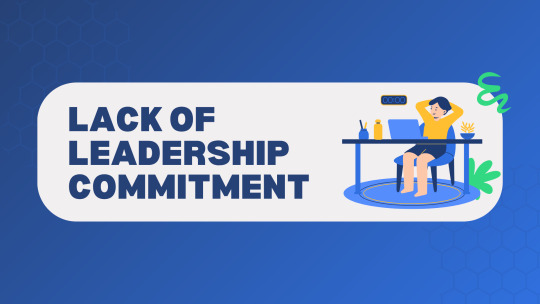
A data culture cannot thrive without support from the top. When executives and managers are not fully on board, the initiative can easily lose momentum. In addition to promoting the use of data, leadership should also use it to inform their own choices. The rest of the company was influenced by their actions.
Without a consistent commitment from leadership, employees are less likely to take data seriously. This can result in isolated efforts where only specific departments care about analytics, leading to a fragmented and ineffective data strategy.
Insufficient Data Literacy
Even if the data is available and accessible, it’s useless if people don’t know how to interpret it. Many workers lack the abilities needed to properly interpret and use data. This may result in bad choices, misunderstandings, and annoyance.
To overcome this challenge, organizations need to invest in education and upskilling. This doesn’t mean turning every employee into a data scientist. It means giving them the tools and knowledge to read, question, and apply data in their roles.
Inconsistent Data Quality and Accessibility
Another major roadblock is poor data quality. Inconsistent, incomplete, or inaccurate data can create confusion and erode trust. If employees can't rely on the data, they won't use it. Additionally, data that is hard to access or stored in silos prevents collaboration and slows down workflows.
A proper data governance framework is essential. The collection, cleaning, storing, and sharing of data must be standardized across organizations. Data loss prevention tools and centralized dashboards can also help streamline access and maintain accuracy.
Cultural Misalignment Across Departments
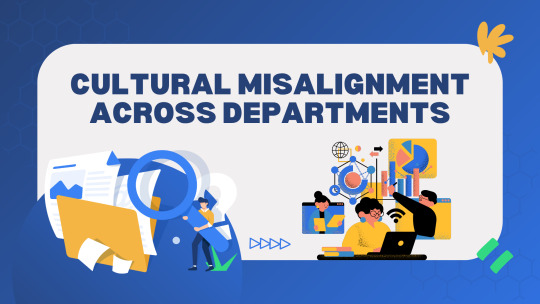
When there’s no unified vision for how data should be used across the company, it creates silos and confusion. Sales might use one metric to track success, while marketing uses another, making collaboration difficult.
Creating a unified data driven culture requires breaking down these silos and building shared goals and metrics. Cross-functional collaboration and inter-departmental workshops can be effective in aligning teams and fostering a cohesive approach to data.
Fear of Accountability
When decisions are driven by data, they can be traced and measured. While this is great for transparency, it also introduces a level of accountability that some employees may find uncomfortable. The fear of being held responsible for bad results can deter people from fully embracing data-driven approaches.
Organizations must focus on creating a safe environment where learning from mistakes is encouraged. When accountability is seen as a path to improvement rather than punishment, employees are more likely to engage with data confidently.
Also, watch this video - How To Keep Your Company's Sensitive Data Secure?
youtube
Conclusion
When developing a data culture, investing in people, processes, and mindset is just as crucial as investing in technology. Overcoming the challenges mentioned above requires patience, clear strategy, and ongoing commitment. The journey might be complex, but the long-term benefits of making data a central part of your company’s DNA are invaluable. When done right, a data-driven culture can lead to smarter decisions, improved performance, and a stronger competitive edge. Start small, stay consistent, and remember—building a data culture is not a destination but a continuous evolution.
#data culture#data driven decision making#data driven culture#data management#building data culture#Youtube
0 notes
Text
The Ultimate Guide to Help You Leave and Attendance Management System
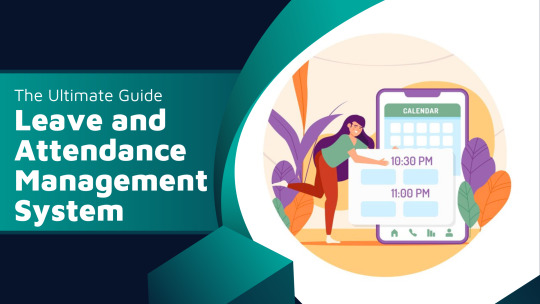
Managing employee leave and attendance is more than just a routine administrative task—it’s the backbone of a well-functioning organization. Imagine a workplace where every leave request is handled seamlessly, schedules are always balanced, and disputes over attendance are a thing of the past. That is the strength of a well-functioning system for managing leave and attendance. By leveraging modern tools and strategies, businesses can transform these processes from potential pain points into opportunities for growth and efficiency.
In this blog, we will explore how businesses can optimize their leave and attendance processes, highlighting the benefits and key considerations.
Understanding the Importance of Streamlined Leave and Attendance

A leave and attendance management system provides an organized framework for tracking employee absences, managing schedules, and ensuring compliance with company policies. When implemented effectively, it saves time, minimizes errors, and boosts employee satisfaction by offering clarity and consistency.
In contrast, relying on outdated manual processes can lead to inaccuracies, disputes, and inefficiencies. These problems can have an effect on staff morale in addition to productivity. Therefore, a current strategy is necessary for a harmonious work atmosphere.
Automating Leave Requests for Efficiency
An automated leave request system simplifies the way employees apply for and manage their time off. Instead of filling out paper forms or sending email requests, employees can submit leave applications through an intuitive platform. Supervisors can approve or decline requests with just a few clicks, reducing the turnaround time for decision-making.
Additionally, automation allows for better visibility into leave patterns. Managers can quickly assess staffing levels, ensuring that teams remain adequately staffed during peak periods. Real-time tracking and notifications reduce miscommunication and scheduling issues.
Enhancing Attendance Tracking Accuracy

Maintaining employee accountability and making sure labor regulations are followed depends heavily on accurate attendance tracking. Modern tools, such as biometric systems, mobile applications, and integrated software, provide precise tracking of working hours, late arrivals, and overtime.
These systems also enable employees to clock in and out seamlessly, whether they work on-site or remotely. For remote teams, GPS-based tracking solutions ensure accountability without being invasive. By integrating attendance tracking with payroll systems, businesses can minimize discrepancies and ensure accurate compensation for every employee.
Ensuring Compliance with Policies and Regulations
Adhering to labor laws and organizational policies is a key responsibility for any business. A robust system ensures that leave entitlements, overtime, and attendance are managed in accordance with legal requirements and internal guidelines.
For instance, businesses can configure rules to align with regional labor laws, such as annual leave entitlements, public holidays, and sick leave provisions. Automated systems help prevent non-compliance by flagging anomalies or overuse of certain leave types. This proactive approach minimizes legal risks among employees, who feel confident that policies are applied fairly.
Promoting Employee Engagement and Satisfaction

Effective leave and attendance management has a direct impact on employee satisfaction. When employees feel that their time off is managed fairly and transparently, it fosters a sense of trust and respect within the organization.
Employees can use self-service interfaces to manage their calendars, check leave balances, and arrange time off without having to rely on HR for updates.
Leveraging Analytics for Strategic Decision-Making
Data-driven decision-making is a game-changer in leave and attendance management. Modern systems come equipped with advanced analytics capabilities, providing insights into employee productivity, absenteeism rates, and seasonal trends.
For example, analytics can reveal peak periods of absenteeism, enabling managers to plan staffing levels accordingly. Identifying patterns such as recurring leave requests during specific times of the year can help organizations implement contingency plans to avoid disruptions. By understanding trends and employee behaviors, businesses can develop policies and practices that align with organizational goals while addressing employee needs.
Also, watch this video - How To Manage Employee Attendance Using EmpMonitor? | EmpMonitor How-To Series
youtube
Conclusion
In today’s fast-paced business environment, an effective leave attendance system is essential for maintaining operational efficiency and fostering employee satisfaction. By automating processes, ensuring compliance, and leveraging analytics, organizations can transform their approach to workforce management. A modern system not only addresses current challenges but also lays the foundation for a resilient and adaptable workplace in the future.
#leave attendance system#attendance management system#leave management#attendance management#attendance tracking#Youtube
0 notes
Text
Steps to Effectively Use Project Scheduling Software

Managing multiple tasks and deadlines in today’s dynamic work environment can feel like navigating a maze. However, what if there was a way to transform this confusion into understanding? Project scheduling software offers a powerful solution to streamline your processes, optimize resources, and ensure every deadline is met with confidence. By adopting the right strategies, you can transform this tool into your ultimate ally for project success.
Follow these essential steps to harness its full potential and bring order to your projects.
Define Clear Goals and Objectives
It's important to decide what you want to accomplish before using the software. Describe the main deliverables, the timetable, and the extent of your project. By allowing you to enter exact data into the scheduling tool, a clear vision establishes the foundation for an effective project plan.
Choose the Right Tool for Your Needs

Not all scheduling software is made equally. Evaluate several platforms based on your individual needs. Consider factors such as usability, customization, integration, and scalability. Choosing the correct tool allows you to manage activities with minimal complication.
Input Accurate Project Data
Once you have selected your software, begin by entering all relevant project details. This includes task descriptions, deadlines, dependencies, and resource allocation. Ensure the data is as precise as possible to avoid mismanagement later.
Break Down Tasks into Manageable Segments
Large undertakings might become overwhelming if they are undertaken all at once. Divide your job into smaller, more manageable tasks using the work scheduling software. Assign deadlines and allocate resources for each segment. This step ensures clarity and helps team members understand their responsibilities.
Assign Roles and Responsibilities

Collaboration is key to any project’s success. Use the software’s features to assign specific tasks to team members. Clearly define who is responsible for what and ensure everyone has access to the necessary resources and information. This minimizes confusion and fosters accountability.
Set Milestones and Checkpoints
Milestones serve as progress markers that help you gauge how far you’ve come. Use the project scheduler to establish significant checkpoints within the timeline. Regularly reviewing these milestones ensures that the project stays on track and allows for timely adjustments if needed.
Leverage Automation Features
Modern scheduling tools often include automation features, such as notifications, reminders, and progress tracking. Utilize these functionalities to reduce manual follow-ups and enhance efficiency. You may concentrate on making strategic decisions since automation ensures that nothing is overlooked.
Encourage Team Collaboration

Most scheduling software comes with collaboration features, such as chat, file sharing, and comment sections. By using team productivity tools to enhance communication and resolve issues promptly. Effective collaboration can significantly improve project outcomes.
Monitor Progress and Adjust as Necessary
Any project must be continuously monitored to be successful. Use dashboards and reporting tools within the software to track progress against the original plan. If you notice any deviations, make necessary adjustments to keep the project aligned with your objectives.
Conduct Post-Project Reviews
Once the project is completed, use the software to generate reports and analyze performance. These insights will help you refine your approach for future projects.
Also, watch this video - EmpMonitor- Best Workforce Productivity & Engagement Software For Your Business
youtube
Conclusion
Efficiently using scheduling software for projects involves more than just understanding its features; it requires a strategic approach to planning, execution, and collaboration. By adopting these steps, you can optimize the tool’s capabilities and ensure your projects are completed on time and within scope. As a project scheduler, this systematic methodology not only enhances productivity but also paves the way for continued success in your professional endeavors.
0 notes
Text
How Can Overtime Management Impact Employee Morale?

Managing overtime plays a crucial role in shaping the overall atmosphere in a workplace, especially in how employees feel about their jobs, work-life balance, and productivity. Balancing workloads and ensuring fair treatment when it comes to extra hours can positively or negatively impact employee morale.
In this blog, We will explore how the effective or ineffective management of overtime can influence the mood, engagement, and retention of employees.
Understanding Overtime Management
Overtime management refers to the strategies and procedures used by organizations to regulate extra working hours, ensuring they are reasonable, balanced, and fairly distributed among the workforce. When managed correctly, overtime can be seen as an opportunity for employees to earn additional income and show their commitment to the company. However, poorly managed overtime can lead to burnout, resentment, and dissatisfaction.
The Positive Side of Overtime Management
When managed well, overtime can be a rewarding experience for employees. Here’s how:
Increased Earnings
For many employees, overtime means more money. By allowing employees to work extra hours, businesses provide them with the chance to boost their earnings. If employees are compensated fairly for their overtime pay, they may feel more valued, which leads to an increase in morale.
Recognition of Hard Work

Overtime can be a form of recognition for employees who go above and beyond. When staff is asked to work extra hours due to high demand or tight deadlines, the company trusts them to handle additional responsibility. This recognition can increase employees’ job satisfaction and motivation.
Career Growth Opportunities
Overtime can also lead to skill development and career advancement opportunities. Working additional hours may allow employees to take on new challenges, collaborate with different teams, or complete important projects. This enhances their professional experience, leading to greater job satisfaction.
Team Building
Overtime can help build stronger teams, especially when employees collaborate on projects outside regular working hours. This can foster better communication, mutual support, and trust among colleagues, which ultimately improves overall morale.
The Negative Effects of Poor Overtime Management
While overtime has benefits, poor management of overtime can severely impact employee morale. Here’s how:
Burnout

One of the most significant risks of excessive overtime is employee burnout. If employees are repeatedly expected to work overtime without adequate rest or time off, they may get exhausted, both physically and mentally. Employees who feel overworked may experience stress, reduced productivity, and decreased job satisfaction.
Work-Life Imbalance
Constant overtime disrupts employees' work-life balance, leaving them with little time for family, hobbies, or rest. Over time, this imbalance can lead to frustration, disengagement, and a feeling of being undervalued, causing a significant dip in morale.
Resentment Towards the Company
Employees who are frequently asked to work overtime without clear communication or fair compensation may begin to feel resentful towards the company. This resentment can erode loyalty, decrease enthusiasm, and lead to higher turnover rates. Employees who feel their work isn’t being recognized or fairly compensated are less likely to stay motivated.
Decreased Productivity

While employees may initially feel enthusiastic about overtime, excessive hours without proper management can reduce productivity. Over time, fatigue sets in, leading to errors, reduced focus, and slower work rates. This can ultimately affect the quality of the output and contribute to a negative work environment.
Health Concerns
Long hours and stress from overwork can have severe health consequences. Chronic overtime can lead to physical ailments such as headaches, eye strain, and sleep disturbances, as well as mental health issues like anxiety or depression.
Also, watch this video - How To Measure Productivity Of Employee According To The Days In A Week With EmpMonitor?
youtube
Conclusion
In summary, the management of overtime has a significant impact on employee morale, with the potential for both positive and negative outcomes. Effective management practices can enhance job satisfaction, foster professional growth, and boost team collaboration, all of which contribute to a motivated workforce. However, when overtime is poorly managed or overused, it can lead to burnout, work-life imbalance, and resentment. By establishing a solid overtime management policy, businesses can protect employee well-being while ensuring that extra hours are used strategically and ethically, ultimately fostering a more productive and engaged workforce.
0 notes
Text
Virtual Training Bootcamp: Intensive Skill-Building Workshops
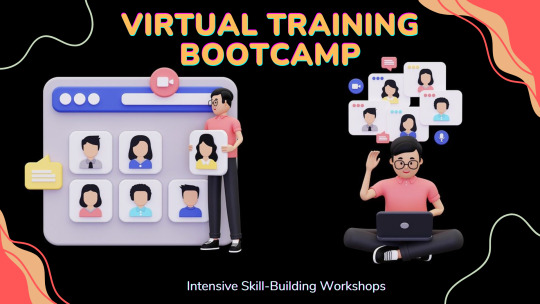
Imagine a learning experience that doesn’t just teach you new skills but transforms how you think, work, and grow. Welcome to the Virtual Training Bootcamp, where innovation meets intensive learning. Whether you're gearing up for a career leap, fine-tuning your expertise, or tackling new challenges head-on, this boot camp is designed to help you thrive in today’s competitive world. Combining expert-led sessions with dynamic, interactive technologies, provides a unique opportunity to obtain real-world knowledge in an engaging and adaptable format.
If you're ready to elevate your abilities to the next level, this is the game-changer you've been looking for.
Why Choose a Virtual Training Bootcamp?
Gone are the days when professional development required rigid schedules or expensive travel. Virtual bootcamps bring the classroom to you, offering unmatched convenience without compromising quality. Here's what sets them apart:
Comprehensive and Specialized Modules
These boot camps focus on delivering a hands-on experience, breaking down complex topics into digestible modules. Each session is led by seasoned instructors who combine theoretical insights with practical exercises, ensuring a 360-degree understanding of their chosen subject.
Interactive Learning Experience

Engagement is the cornerstone of effective learning. These training bootcamps leverage cutting-edge tools like live Q&A, real-time polls, breakout rooms, and gamified challenges to keep participants involved and motivated.
Adaptable Learning Paths
Whether you're a beginner or an experienced professional, virtual bootcamps are designed to cater to varying skill levels. Participants can choose foundational workshops or advanced courses, making it a perfect fit for diverse learning needs.
Networking Opportunities
These programs bring together individuals from different industries and locations, fostering collaboration and networking. By connecting with like-minded peers and industry leaders, participants often gain valuable insights and opportunities beyond the training.
Key Features of a Virtual Training Bootcamp

To truly understand the value of these workshops, let’s explore some of their defining features:
Expert Instructors: Learn directly from industry veterans with proven track records in their fields.
Real-World Scenarios: Apply concepts through case studies, simulations, and project-based learning.
Flexible Scheduling: With options for weekend or evening sessions, these boot camps accommodate even the busiest schedules.
Post-Bootcamp Support: Many programs offer resources like recorded sessions, eBooks, and mentorship opportunities to support ongoing learning.
Who Can Benefit?
The charm of these training bootcamps stems from its broad appeal. Whether you’re an individual aiming for personal growth or a corporation seeking to upskill your workforce planning, these workshops offer something for everyone:
Professionals: Gain new certifications, enhance your resume, or prepare for career advancement.
Entrepreneurs: Master skills like digital marketing, financial management, or product design to grow your business.
Corporates: Empower your team with training that drives productivity, innovation, and efficiency.
Popular Workshop Topics

These training bootcamps cover a wide array of topics, ensuring there’s something for everyone. Some of the most in-demand areas include:
Data Analytics: To make wise decisions, learn to gather, examine, and understand data.
Digital Marketing: Develop your social media, content marketing, and SEO skills to improve your brand.
Leadership Skills: Develop the emotional intelligence, communication skills, and strategic thinking required to lead teams effectively.
Tech Tools: Get hands-on experience with popular software like Excel, Python, and visual project management tools.
How to Make the Most of a Virtual Training Bootcamp
To fully benefit from these workshops, participants should approach them with a clear strategy:
Set Clear Goals: Define what you want to accomplish by the end of the program.
Stay Engaged: Actively participate in live sessions and complete all assignments.
Leverage Resources: Use supplementary materials like guides, forums, and mentorship programs to deepen your understanding.
Apply Your Knowledge: Practice your newly acquired skills in real-world scenarios as soon as possible.
Also, watch this video - EmpMonitor(Employee Monitoring Software) Dashboard & Its Features
youtube
Final Thoughts
Virtual learning Bootcamps are revolutionizing how we learn, providing a flexible yet powerful platform to acquire critical skills. These workshops not only save time and resources but also offer unparalleled opportunities to grow, connect, and excel in your field. If you’re ready to elevate your skills and stay ahead in your industry, this is your sign to enroll in a boot camp today. With the right virtual training software, these sessions will empower you to unlock your potential and achieve your professional dreams.
0 notes
Text
Bossware: A Must-Have for Today's Managers

In today’s fast-paced corporate environment, managers must strike a balance between efficiency and employee autonomy. Enter Bossware, a powerful suite of tools designed to streamline workflows and enhance team efficiency. By providing managers with real-time insights into team activities, task progress, and potential bottlenecks, leadership is empowered like never before. But what sets it apart is its ability to foster transparency and accountability without compromising trust.
In this blog, We will explore how this tool is reshaping modern management, its key benefits, and why it’s becoming an indispensable asset for businesses of all sizes.
Let’s explore why it’s truly a must have -
Understanding What is Bossware

The software that allows managers to monitor, evaluate, and enhance workplace procedures is referenced. While its name might conjure images of invasive surveillance, its true purpose extends far beyond that. At its core, It provides tools that empower managers to oversee projects, track team performance, and maintain transparency—all while fostering productivity and collaboration.
This tool's functionality varies and includes time track software, task management tools, and predictive analytics systems. It enables managers to make data-driven decisions, anticipate challenges, and improve workflows. When utilized ethically, It achieves a balance of monitoring and trust, benefiting both leaders and teams.
What Makes Bossware Indispensable for Managers?
Streamlined Monitoring and Reporting
This tool offers real-time dashboards that provide an instant overview of team performance. From tracking project timelines to monitoring resource allocation, managers can identify gaps and inefficiencies before they escalate. Automated reporting saves time, ensuring that decision-making is data-driven and precise.
Enhanced Communication and Collaboration
Effective communication is essential to good management. It includes tools that facilitate seamless interaction between teams, whether working in-office or remotely. Features like centralized chat platforms, integrated calendars, and task management systems foster collaboration, ensuring everyone is on the same page.
Proactive Problem-Solving

It excels in predictive analytics, allowing managers to foresee challenges and implement solutions in advance. For instance, if it shows signs of employee burnout, managers can intervene early, preventing productivity dips and ensuring well-being.
Customization for Diverse Needs
Its customizable features let organizations tailor the software to align with their specific workflows, making it adaptable for industries ranging from tech startups to large manufacturing firms.
Benefits Beyond the Office
Its influence extends beyond day-to-day operations. It contributes to long-term success by fostering:
Employee Development: Detailed analytics help identify areas where team members excel or need improvement, enabling targeted training programs.
Better Decision-Making: Offering actionable insights, equips managers to make well-informed strategic decisions.
Stronger Team Morale: Contrary to misconceptions, when implemented ethically, It enhances trust by promoting transparency and fairness.
Overcoming Common Misconceptions

Businesses that prioritize communication and use these tools to support people rather than micromanage them achieve great results. When employees understand the value it adds to their workflow, resistance diminishes, and collaboration flourishes.
Why Your Business Needs Bossware
Using the right tools is essential to staying ahead in a competitive market. It equips managers with the insights needed to lead effectively while fostering a culture of accountability and growth. By balancing oversight and trust, it bridges the gap between leaders and employees, assuring mutual success.
Also, watch this video - Manage Remote Work Easily With Powerful Monitoring Software: EmpMonitor
youtube
Conclusion
In conclusion, Bossware is more than just a management tool. It enables managers to lead with accuracy and compassion by fusing strong analytics, efficient communication, and proactive problem-solving skills. While fostering transparency and accountability, it ensures employees feel supported rather than scrutinized. For businesses aiming to stay competitive, It offers a strategic edge by aligning team performance with organizational goals. So, if you’re still wondering, What is Bossware? It's the secret to bringing creativity, efficiency, and trust to your company.
0 notes
Text
Time is Money: How Time and Billing Software Can Save Your Business

Managing time efficiently can mean the difference between thriving profits and lost opportunities. For businesses that rely on billable hours, such as law firms, consultancies, or creative agencies, the ability to track time accurately and bill clients seamlessly is critical. Time and billing software are extremely useful in this situation.
By automating tasks, eliminating errors, and streamlining operations, this technology saves both time and money while enhancing productivity and client satisfaction.
Let’s explore how embracing this innovation can transform your business efficiency.
The Hidden Cost of Inefficiency
Inefficient time tracking and billing processes cost more than you might realize. Studies show that manual methods or outdated systems often lead to errors, delays, and even lost revenue. Employees may spend unnecessary hours on administrative tasks, pulling time away from billable activities. Cash flow might be hampered and client relationships harmed by poorly handled bills or untallied hours.
This is where modern solutions come in, offering automated features that eliminate redundancies and ensure precision in every task.
The Core Benefits of Modern Time and Billing Systems

Accurate Time Tracking
Time tracking tools record every minute spent on tasks, ensuring you charge clients appropriately and never miss billable hours. Employees can track their time effortlessly using apps, integrations, or automated prompts, making the process seamless and error-free.
Improved Team Productivity
Employees are able to concentrate on their primary duties by automating repetitive operations. Real-time information regarding task durations helps managers identify bottlenecks and efficiently reallocate personnel. Team performance and project management both improve as a result.
Effortless Invoicing
Generating invoices can be a time-consuming chore, especially for firms handling multiple clients and projects simultaneously. Time and billing systems simplify this process by auto-generating invoices based on tracked hours and pre-set rates.
Enhanced Client Transparency

A key element of trust is clarity. When clients receive detailed reports outlining how every hour was spent, they are more likely to appreciate your services. Transparency strengthens relationships and improves client retention.
Scalability and Flexibility
Many tools offer customization options, integrations with existing software, and even cloud-based access, making them a versatile choice for businesses of any size.
Saving Time and Money: A Real-World Perspective
Let’s consider an example: a mid-sized law firm handling multiple client cases. Before adopting a digital system, the firm struggled with tracking hours accurately and often faced client disputes over billing discrepancies. By implementing an integrated time and billing platform, they cut invoice preparation time by 40%, reduced errors by 80%, and saw a significant improvement in cash flow.
This transformation not only boosted the firm’s bottom line but also reduced employee burnout caused by manual administrative tasks.
Choosing the Right System

Not all software is created equal. When choosing a tool, look for characteristics that correspond with your business's needs:
Ease of Use: A user-friendly interface ensures quick adoption across your team.
Customizable Reports: Tailor reports to provide the insights you need for decision-making.
Integration Capabilities: Ensure compatibility with tools like project management or accounting software.
Secure Data Storage: Protect sensitive client and financial information with robust encryption.
Scalability: Opt for a solution that can adapt to your evolving business requirements.
Also, watch this video - EmpMonitor - Best Time Tracking Software | Productivity Management
youtube
Final Thoughts
Time is the one resource you can’t create more of, making its management essential to business success. By leveraging time tracking software solutions, businesses can streamline operations, reduce costs, and maximize revenue. Whether you’re tracking billable hours or managing client invoices, the right approach ensures that no second—or dollar—is wasted.
In the end, it’s not just about saving time or money; it’s about creating a business that thrives in an ever-demanding world. Thus, embrace innovation, take the risk, and see how your business grows.
0 notes
Text
How Workforce Forecasting Will Shape the Workplace in 2025

Businesses worldwide are embarking on a new era of personnel management as we move to 2025. Being able to predict skills, labor demands, and market developments is becoming essential in a setting that is becoming more dynamic and competitive.
Workforce forecasting helps organizations align their workforce with business goals by leveraging data analytics, artificial intelligence, and predictive modeling. These advanced tools enable companies to assess the supply and demand of talent, ensuring they have the right people in the right roles at the right time.
In this blog, we will examine how businesses' effective use of these insights to optimize their talent strategies will shape the future of work.
The Role of Artificial Intelligence
With machine learning algorithms and advanced analytics tools, AI can analyze vast amounts of data from multiple sources to predict future workforce needs more accurately. By identifying trends and patterns in employee behavior, market shifts, and economic conditions, AI can provide organizations with invaluable insights to plan for the future.
In 2025, AI-driven forecasting will become even more sophisticated, enabling businesses to adjust their strategies in real time. AI will not only predict when and where talent will be needed but also recommend the best ways to attract, retain, and develop that talent. This will empower companies to make smarter, data-driven decisions that drive long-term success.
The Power of Predictive Analytics

By analyzing patterns in employee turnover, performance, and industry developments, companies can forecast staffing needs with impressive accuracy. This proactive approach not only helps organizations prevent labor shortages or overstaffing but also allows them to make more informed decisions about recruitment, training, and development.
As businesses adapt to digital transformation, the demand for tech-savvy employees will increase. Through forecasting, organizations can stay ahead of the curve by identifying skill gaps and anticipating the future needs of their teams. For example, companies in industries like healthcare and technology will need to plan for the rise of automation, AI, and remote work, which will all have significant implications for workforce requirements.
Flexibility and Adaptability
By using workforce forecasts, businesses can adjust as needed and make sure they have the proper balance of contract, full-time, and part-time employees to meet changing demands.
In 2025, businesses will increasingly rely on hybrid and remote work models. It will be essential to be able to predict the needs of a geographically distributed workforce. To make sure teams stay connected and productive no matter where they are, organizations will need to evaluate things like skill distribution, time zone alignment, and virtual collaboration.

Enhancing Employee Experience
By predicting future workforce needs, companies can offer employees more personalized career development opportunities. For example, organizations can identify employees at risk of burnout and offer them additional support or upskilling programs to help them advance in their careers.
As the workplace continues to evolve, employees will prioritize employee work-life balance, along with seeking greater flexibility and opportunities for growth. By integrating workforce management forecasting with employee engagement strategies, businesses can create a culture of continuous learning and development, ensuring their teams remain motivated and resilient in the face of change.
Building a Diverse and Inclusive Workforce

By analyzing workforce demographics and trends, organizations can identify opportunities to hire and retain a more diverse talent pool. Predictive models can help companies assess where they need to focus their recruitment efforts and ensure they are creating an inclusive environment where all employees have the opportunity to thrive.
Companies that embrace diversity in their workforce management will not only foster a more inclusive workplace but also gain a competitive edge by tapping into a wider pool of talent.
Also, watch this video - EmpMonitor - Best Workforce Productivity & Engagement Software For Your Business
youtube
Conclusion
Looking toward 2025, workforce planning and forecasting will continue to be a critical component of successful workforce management strategies. As businesses face new challenges, such as rapid technological advancements, economic shifts, and changing employee expectations, the need for advanced workforce planning and forecasting will only grow. By embracing data-driven insights and AI-powered analytics, organizations can create agile, flexible, and diverse workforces that are better equipped to thrive in an ever-evolving business landscape.
#workforce management#workforce forecasting#workforce planning#forecasting techniques#workforce#Youtube
0 notes
Text
Improve Team Performance with Communication and Trust-Building

Improving team performance is a top priority for organizations striving for success. Effective communication and trust are the cornerstones of a high-performing team; they don't just happen. Clear communication ensures team members understand their roles, collaborate effectively, and align with shared objectives. At the same time, trust fosters an environment where individuals feel valued, supported, and motivated to contribute their best. Without these elements, even skilled teams can struggle to achieve their potential.
This blog delves into how communication and trust-building can improve team performance, offering actionable strategies to help leaders cultivate a thriving, cohesive, and productive workplace.
Why Communication Matters in Teams
Clear and open communication is the foundation of high-performing teams. Without it, misunderstandings arise, tasks are delayed, and morale suffers. Communication goes beyond exchanging information—it’s about creating an environment where team members feel heard, respected, and aligned toward common objectives.
When communication flows effectively, it fosters collaboration. Teams can easily exchange updates, solve problems, and generate ideas. Open dialogue ensures that everyone understands their roles, and responsibilities, and how their contributions impact the bigger picture.
Trust: The Backbone of Team Success

When team members trust one another, they feel confident sharing ideas, expressing concerns, and taking calculated risks. Trust reduces the fear of failure, encourages innovation, and strengthens relationships within the group.
Lack of trust, on the other hand, can lead to micromanagement, interpersonal conflicts, and inefficiencies. A team without trust struggles to thrive, even if individual members are highly skilled. Although building trust takes deliberate work and constant action, the benefits are great.
Strategies to Foster Communication and Trust
If you seek strategies to improve team work, focus on enhancing communication and trust-building practices. Here are some strategies -
Create a Safe Environment for Dialogue
Encourage regular check-ins, open forums, and anonymous feedback options to ensure every voice is heard.
Set Clear Expectations
Establish clear expectations regarding roles, deadlines, and project outcomes. When everyone knows what is expected of them, mistakes are decreased.
Promote Active Listening
Encourage team members to practice active listening by giving their full attention, asking clarifying questions, and summarizing key points.
Engage in Team-Building Activities

Trust doesn’t develop overnight. Use team-building exercises to help members connect on a personal level. Activities like problem-solving challenges, retreats, or even casual social events can break down barriers and strengthen bonds.
Lead by Example
Team relationships are significantly shaped by leaders. Model the behaviors you wish to see in your team—be transparent, approachable, and accountable. Demonstrating trust and effective communication sets the tone for the entire group.
Provide Constructive Feedback
Focus on constructive, actionable feedback rather than criticism. Regularly recognizing achievements and addressing areas for improvement in a supportive manner fosters trust and motivation.
Use Technology to Bridge Gaps
Use project management software, video conferencing, and chat apps to promote effective communication and cooperation.
Measuring the Impact of Communication and Trust

The effectiveness of your efforts to improve the performance of the team can be gauged through various metrics. Look for:
Increased productivity and efficiency.
Enhanced problem-solving and decision-making capabilities.
Higher employee engagement and satisfaction levels.
Reduced conflicts and turnover rates.
Remember, building trust and fostering communication is an ongoing process that evolves with the team’s dynamics.
Also watch this video - EmpMonitor | Leading Employee Engagement and Workforce Productivity Tool
youtube
Conclusion
In conclusion, building a high-performing team hinges on fostering open communication and trust among its members. These elements create a foundation where collaboration, innovation, and problem-solving can flourish. By implementing effective strategies to improve team performance, such as promoting active listening, setting clear expectations, and encouraging team-building activities, leaders can create a cohesive and motivated workforce. Trust and communication are not just ideals but actionable goals that enhance productivity and drive success. Investing in these areas ensures a positive work culture where both individuals and the team thrive, enabling organizations to achieve their objectives with confidence and efficiency.
0 notes
Text
Who Develops the Most Effective Teamwork Qualities?

Teamwork is the cornerstone of success in any organization, but what defines effective teamwork, and who develops these crucial qualities? Is it the charismatic leader steering the ship, the empathetic collaborator promoting connection, or the adaptable problem-solver navigating challenges? In reality, the most effective teamwork skills emerge from a blend of diverse skills, perspectives, and experiences. Whether it’s clear communication, mutual trust, or adaptability under pressure, teamwork thrives when individuals contribute their unique strengths.
This blog explores the traits that build exceptional teamwork, the people who represent them, and the steps anyone can take to cultivate these indispensable skills.
The Natural Leader
Leaders often take the spotlight in discussions about teamwork. However, a leader's ability to create effective teamwork extends beyond simply issuing commands and distributing tasks. Great leaders foster collaboration by building trust, creating clear goals, and motivating team members to work together toward a common vision. Leadership isn’t about commanding—it’s about guiding. The most effective leaders develop teamwork skills by listening actively, providing constructive feedback, and empowering others to shine.
Leaders who excel in teamwork understand that their success lies in the team’s success. They embrace diverse perspectives and leverage each member’s strengths to ensure collective growth.
The Empathetic Collaborator

Empathy is often underestimated but important for developing strong teamwork qualities. Empathetic collaborators create safe spaces for open communication and mutual respect. They prioritize understanding others' perspectives, ensuring each team member feels valued and heard.
This ability to connect emotionally fosters a culture of inclusivity and trust, which is crucial for a team’s success. Empathetic individuals often mediate conflicts effectively, turning potential roadblocks into opportunities for growth. They teach us that teamwork thrives when people feel emotionally secure.
The Adaptable Problem-Solver
The modern workplace is ever-changing, and adaptability is essential for teamwork. Those who can adapt to strategies accept change, and stay solution-focused under pressure are considered adaptable team members. Their flexibility makes them invaluable in high-pressure environments where challenges are inevitable.
Problem-solvers shine brightest in teams because they focus on solutions, not blame. They inspire their teammates to think creatively, explore alternatives, and tackle problems collaboratively. Teams that include adaptable individuals often find themselves better equipped to navigate complexities and deliver results.
The Quiet Yet Reliable Contributor

Not every team member needs to be talkative or assertive. Quieter members possess some of the most effective collaborative qualities—they regularly deliver outcomes, stay organized, and maintain a calm demeanor under pressure. These individuals may not seek the spotlight, but their dependability keeps the workplace productive.
Quiet contributors often develop their teamwork skills through meticulous preparation and attention to detail. They remind us that collaboration isn’t just about speaking up; it’s also about following through.
How Are Teamwork Qualities Developed?
No one is born with all the traits required for effective teamwork. These qualities are cultivated over time through experiences, education, and reflection. Here are some key ways people develop effective teamwork skills:
Learning from Mistakes
Mistakes are valuable teachers. Reflecting on what went wrong and how a team can improve helps build resilience and better collaboration.
Embracing Feedback

Constructive criticism is a cornerstone of growth. Teams that encourage feedback without judgment create an environment of continuous learning.
Practicing Communication
Effective teamwork hinges on clear and honest communication. Teams that prioritize transparency and active listening avoid misunderstandings and build stronger connections.
Encouraging Collaboration
Structured team-building exercises and collaborative teamwork projects help individuals understand each other’s strengths and weaknesses, fostering better synergy.
Adapting to Roles
Recognizing when to lead, follow, or support is a crucial skill for any team member. Flexibility in roles ensures that the team functions efficiently.
Also, watch this video - Boost Workplace Productivity with Employee Monitoring Software
youtube
Conclusion
So, who develops the most effective teamwork skills? The answer is everyone. Leaders, empathetic collaborators, adaptable problem-solvers, and quiet contributors all play vital roles in creating a cohesive and productive team. The magic lies in recognizing the unique qualities each person brings to the table and fostering an environment where those qualities can flourish.
Effective teamwork isn’t about finding perfect individuals—it’s about building a team that complements and supports one another, learning and growing together to achieve shared success. As workplaces continue to evolve, the ability to nurture team building skills will remain an essential skill for professionals across all industries.
0 notes
Text
How Workload Management Changed The Game In 2025

In 2025, managing workload has transcended its traditional role, evolving into a strategic cornerstone for organizational success. As businesses struggle with increasing demands and the complexities of a hybrid workforce, the need for an effective management plan has never been more critical. Advanced technologies, such as AI-driven tools and data analytics, have revolutionized how organizations allocate resources, monitor productivity, and adapt to shifting market dynamics.
This transformation is not merely about optimizing efficiency; it also emphasizes employee well-being, promoting work-life balance, and preventing burnout.
In this article, we will explore how these changes have fundamentally reshaped workload management, fostering a culture of innovation and resilience that empowers organizations to thrive in an increasingly competitive landscape.
The Rise of Advanced Workload Management Tools

Modern technology has completely changed the workload control scene. The days of using simple project management software and manual spreadsheets are long gone. By 2025, businesses will be using advanced AI-powered task management systems that offer real-time information on team output and project status. These tools can analyze data, predict bottlenecks, and optimize task assignments, ensuring that resources are utilized effectively.
Prioritizing Employee Well-Being
By 2025, businesses will have implemented flexible work arrangements that let workers set their own hours and handle their assignments.
The management system includes features that help employees set boundaries and avoid burnout. By encouraging employees to take breaks and manage their time effectively, organizations are seeing increased job satisfaction and retention rates. Happy employees are more productive, and this new approach to team management is a testament to that truth.
Data-Driven Decision Making

In 2025, data is the new gold. Organizations are harnessing the power of analytics to inform their management strategies. By tracking key performance indicators (KPIs), businesses can make informed decisions about resource allocation, project timelines, and team performance.
For example, a software development company might analyze data from past projects to identify patterns in productivity. This insight allows them to make data-driven decisions when planning future projects, ensuring that workloads are realistic and achievable. By relying on analytics, organizations are not only optimizing their operations but also fostering a culture of continuous improvement.
Embracing Agile Methodologies
By 2025, workload control has fully embraced agile methodologies, allowing teams to respond quickly to changing market conditions and customer needs. Agile frameworks promote iterative work processes, enabling teams to break projects into manageable chunks and adjust their strategies on the fly.
This flexibility is especially beneficial in industries where innovation is key. For example, in the tech industry, companies can quickly pivot their projects based on user feedback, ensuring that their products remain relevant and competitive.
The Role of Remote Work

By 2025, companies have adapted to a hybrid work model that combines in-office and remote work, requiring new strategies for managing workload.
These tools integrate seamlessly with communication platforms, allowing remote teams to collaborate effectively. Features such as task assignments, deadline tracking, and progress updates are all accessible from anywhere, ensuring that team members stay connected and informed, regardless of location.
Enhancing Team Collaboration
In 2025, the importance of collaboration in management cannot be overstated. Advanced tools facilitate seamless communication between team members, breaking down silos and promoting cross-functional collaboration.
With integrated platforms, teams can easily share updates, seek feedback, and collaborate on projects in real-time.
Also, watch this video - How To Manage & Monitor Employees Working In Multiple Shift
youtube
Final Thoughts
The transformation of team workload management by 2025 signifies a new era for organizations. By embracing advanced tools, prioritizing employee well-being, leveraging data, adopting agile methodologies, adapting to remote work, and enhancing collaboration, companies are positioning themselves for success in an increasingly competitive landscape. It is obvious that efficient management will remain a key component in promoting both employee satisfaction and organizational performance as we go forward.
#workload management#employee dissatisfaction#team workload#workload management tools#workforce management#Youtube
0 notes
Text
10 Ideas for Enhancing Your Performance Appraisal Process

In today’s fast-paced work environment, traditional performance appraisals often feel like a relic of the past—something to check off a list rather than a genuine opportunity for growth and connection. Employees want rapid, constructive, and engaging feedback, and businesses are increasingly recognizing the importance of nurturing talent to achieve success.
Consider a performance appraisal process that does more than just assess past performance; it actively promotes employee development, fires motivation, and deepens the link between managers and their teams.
In this blog, We will explore ten innovative ideas for enhancing your performance appraisal. These strategies aim to create a more meaningful dialogue, inspire professional growth, and ultimately contribute to a more engaged and productive workforce.
#1 Set Clear Expectations
Before the appraisal process begins, ensure that employees understand what is expected of them. Clear performance goals and criteria should be presented at the beginning of the review period. This transparency helps employees align their work with the company’s objectives, making the appraisal more relevant and constructive.
#2 Incorporate 360-Degree Feedback

360-degree feedback offers a more complete picture of an employee's performance. This strategy involves receiving feedback from a variety of sources, including peers, subordinates, and superiors. By collecting diverse perspectives, you can help employees gain a better understanding of their strengths and areas for improvement.
#3 Embrace Continuous Feedback
Move away from the annual review model and toward continual feedback. This approach encourages regular check-ins throughout the year, allowing managers and employees to discuss performance in real time. Frequent feedback can help address issues as they arise and foster a culture of open communication, reducing anxiety around formal appraisal meetings.
#4 Use Performance Management Software
Investing in performance management software can streamline the appraisal process. These tools often include features for setting goals, tracking progress, and facilitating feedback. With intuitive dashboards and analytics, both managers and employees can easily access performance data, making discussions more productive and focused.
#5 Focus on Employee Development

Shift the focus of appraisals from merely assessing past performance to emphasizing employee development. Appraisals can be used to identify growth areas and establish individualized development plans. Encouraging employees to pursue professional growth can boost engagement and retention rates.
#6 Make It a Two-Way Conversation
Encourage a two-way dialogue during the appraisal process. Instead of a one-sided review, create space for employees to express their thoughts, concerns, and aspirations. This collaborative approach not only builds trust but also allows managers to understand their employees' perspectives.
#7 Recognize and Reward Achievements
Incorporate recognition and rewards into your appraisal process. Recognizing an employee's accomplishments can increase morale and motivation. Consider implementing a structured reward system that aligns with performance monitoring outcomes, whether through bonuses, promotions, or public recognition.
#8 Utilize Goal-Setting Frameworks

Consider implementing goal-setting frameworks such as SMART (Specific, Measurable, Achievable, Relevant, Time-bound) or OKRs (Objectives and Key Results). These frameworks can provide clarity and direction, ensuring managers and employees are aligned on performance expectations.
#9 Offer Training for Managers
Train managers on effective appraisal techniques to ensure they provide constructive and actionable feedback. Training can cover active listening, delivering difficult messages, and setting SMART goals. Empowered managers are better equipped to support their teams through the appraisal process.
#10 Solicit Employee Feedback on the Process
Lastly, gather feedback from employees about the performance review process itself. Understanding their experiences and perspectives can provide valuable insights into what works and needs improvement. Use surveys or focus groups to collect input and be open to making adjustments based on their suggestions.
Also, watch this video - EmpMonitor | Leading Employee Engagement and Workforce Productivity Tool
youtube
Conclusion
Enhancing your performance appraisal system is essential for fostering a productive and engaged workforce. By implementing these ten ideas, you can create a more effective and supportive appraisal system that benefits employees and the organization. Remember, the goal of performance appraisals should not only be to assess performance but to inspire growth, development, and a culture of continuous improvement.
#performance appraisal#employee monitoring#appraisal system#360 degree appraisal#employee appraisal#Youtube
0 notes
Text
The Future of Work Meeting: Trends You Need to Know for 2025
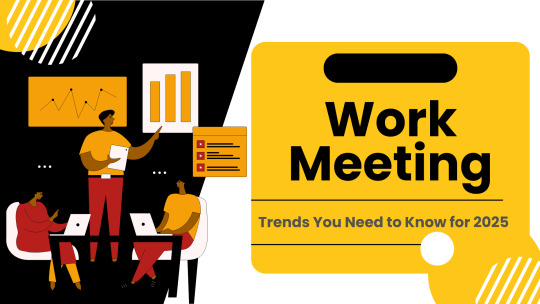
As we approach 2025, workplace dynamics are rapidly evolving, and meetings are an integral part of every organization. From technology innovations to shifting cultural norms, the traditional work meetings are transforming. Companies are seeking new ways to enhance productivity, foster collaboration, and maintain engagement, especially with hybrid and remote work models becoming the new norm.
Let’s explore the key trends shaping the future of work meeting and what you need to know to stay ahead.
Hybrid Meetings Become the Standard
Hybrid meetings, blending in-person and virtual participation, are becoming the norm as remote work rises. Companies invest in technologies like HD video conferencing and collaborative platforms (Zoom, Microsoft Teams) to enhance the experience for all attendees. In 2025, advancements like AI-driven virtual assistants and 3D holograms will further bridge the gap, ensuring seamless collaboration and engagement across physical and digital spaces.
Shorter, More Focused Meetings

In 2025, the focus will be on shorter, more concise meetings that respect everyone’s time. With attention spans decreasing and workloads growing, many companies are adopting the “15-minute meeting” rule or setting strict time limits for each agenda item.
Agile methodologies, which focus on short, regular check-ins like “stand-up” meetings, are gaining popularity outside the tech sector. This format allows teams to stay updated, make decisions quickly, and move forward without bogging down productivity.
Asynchronous Meetings
In 2025, not all meetings will require people to be present simultaneously. Asynchronous meetings are gaining traction, particularly in global organizations where team members work across different time zones. Instead of forcing everyone to attend live, asynchronous meetings allow participants to contribute on their own time.
Using video messages, collaborative documents, or tools like Loom or Slack threads, team members can share updates, comments, and ideas without the need for a scheduled call. The asynchronous model is expected to grow as companies prioritize work-life balance and seek to accommodate diverse working styles.
AI-Powered Meeting Assistants

AI-powered tools are becoming increasingly integrated into the workplace, and meetings are no exception. In 2025, AI assistants will take on a more prominent role in facilitating meetings, from scheduling and organizing to note-taking and task follow-up. Tools like Otter.ai, Fireflies.ai, and Voicea are already transforming how we handle meeting documentation and action items.
AI assistants can automatically generate meeting summaries, highlight key decisions, and assign tasks, freeing up participants to focus on the discussion at hand.
Increased Emphasis on Inclusivity and Diversity
Diversity and inclusion are at the forefront of organizational strategies, and meetings are key areas where inclusivity will play a bigger role. In 2025, companies will focus on making meetings more accessible and inclusive, ensuring that everyone, regardless of location, gender, or ability, can participate fully.
This shift will include everything from more thoughtful facilitation practices (ensuring all voices are heard) to the use of accessible technology (like closed captioning and sign language interpretation).
Data-Driven Meeting Analytics

In 2025, organizations will increasingly turn to data analytics to measure the effectiveness of their meetings. Platforms like Microsoft Teams and Zoom are already offering analytics tools that track meeting length, participant engagement, and follow-up actions. These tools help managers identify patterns.
Data-driven insights will allow companies to fine-tune their meeting structures, reduce inefficiencies, and improve overall team collaboration.
Wellness-Centric Meeting Culture
Mental health and employee well-being are becoming critical considerations in workplace culture, and meetings will reflect this shift. In 2025, expect to see more organizations adopting wellness-centric meeting practices. This could include designated “no-meeting” days, regular breaks during long meetings, or even incorporating mindfulness exercises into meeting agendas. The future of work meetings will prioritize a healthier, more sustainable pace, contributing to better employee well-being and productivity.
Also, Watch the video - Emp Monitor | Boost Workplace Productivity with Employee Monitoring Software
youtube
Conclusion
As we look toward 2025, workplace meeting practices will continue to evolve alongside the broader trends shaping the future of work. By embracing new technologies, promoting inclusivity, and prioritizing wellness, organizations can create more productive, efficient, and engaging workplace meetings. Staying ahead of these trends will be essential for companies seeking to maintain a competitive edge in the modern workplace.
0 notes
Text
Mandatory Overtime: The Hidden Struggles of Employees in Workplace
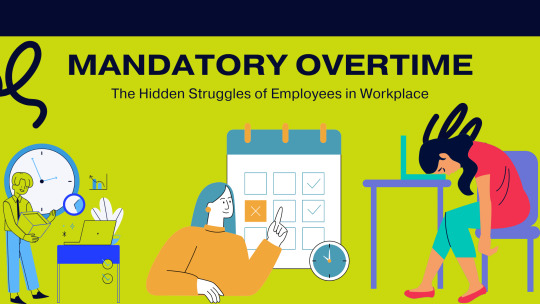
In the modern workplace, the demands for productivity often clash with the personal lives of employees, leading to the controversial practice of working overtime. While companies may view this as a necessary strategy to meet deadlines and boost output, the reality is far more complex.
For many workers, working overtime transforms their jobs from a source of livelihood to a strict cycle of exhaustion and stress. The allure of extra pay is often overshadowed by the hidden struggles that arise—strained relationships, deteriorating health, and a pervasive sense of imbalance between work and life.
This blog explores the multifaceted impacts of work overtime, shedding light on the often unseen emotional and physical toll it takes on employees. Deeper, we will find implications not only for individuals but also for businesses, exposing why tackling this problem is crucial for fostering a better, more involved workforce.
Understanding Mandatory Overtime

Mandatory overtime refers to the requirement that employees work beyond their scheduled hours, typically without prior notice. While overtime can sometimes be voluntary, when it becomes a mandatory aspect of a job, it alters the employee's work-life balance and introduces various stressors. Employees may feel compelled to comply due to fear of job loss, performance evaluation, or additional pressure from management to meet deadlines.
The Impact on Work-Life Balance
One of the most immediate and detrimental effects of work overtime is the disruption of work-life balance. Employees often struggle with multiple responsibilities outside of work, including family obligations, social activities, and personal time for relaxation. When work overtime enters the picture, these personal commitments can be sidelined, leading to increased stress and feelings of being overwhelmed.
For example, a parent who suddenly finds themselves working late may miss important family events, school functions, or even the chance to unwind after a long day.
Mental and Physical Health Consequences

The pressure of working overtime often translates into serious mental and physical health consequences. Extended work hours can lead to increased stress levels, anxiety, and even depression. Employees forced to work beyond their scheduled shifts may experience fatigue, making it difficult to concentrate and perform tasks efficiently. This fatigue can also compromise their immune systems, making them more susceptible to illnesses.
Research has shown that excessive overtime can lead to chronic health issues, including heart disease and high blood pressure. Moreover, a lack of time to engage in self-care activities.
Erosion of Employee Morale
It significantly erodes employee morale. When workers feel their time and personal lives are not respected, it breeds dissatisfaction and disengagement. This dissatisfaction can lead to a toxic workplace culture characterized by low motivation, high turnover rates, and reduced collaboration among team members.
Employees who are frequently required to work overtime may begin to view their jobs as a source of stress rather than fulfillment. This shift in perception can lead to a decrease in productivity and innovation.
The Importance of Communication and Support

Addressing the struggles of employees facing work overtime requires open communication and a supportive workplace culture. Employers should engage in honest conversations about workload expectations and the need for overtime. By fostering an environment where employees feel comfortable discussing their concerns, organizations can better understand the potential impacts of overtime work on their workforce.
For example, offering flexible scheduling options, providing adequate staffing to manage workload fluctuations, or allowing employees to opt out of overtime under certain conditions can help relieve some of the pressures associated with overtime work.
Additionally, companies should prioritize employee well-being by encouraging regular breaks, promoting mental health resources, and fostering a culture of work-life balance.
Also, Watch this video - EmpMonitor - Best Time Tracking Software
youtube
Conclusion
Work overtime presents significant hidden struggles for employees, impacting their work-life balance, mental and physical health, and overall morale. While companies may implement overtime as a short-term solution for productivity challenges, the long-term consequences can be detrimental. By fostering open communication, prioritizing employee well-being, and developing supportive workplace policies, organizations can mitigate the negative impacts of overtime work.
In a world where employee well-being is increasingly recognized as a crucial component of business success, organizations need to address the challenges posed by overtime work, ensuring a healthier, happier, and more productive workforce.
0 notes
Text
People Analytics: The Key to Unlocking Your Business Potential

Imagine if you could unlock your business's hidden potential with the power of data—not just numbers and spreadsheets, but deep insights into your organization's most valuable asset: your employees.
In today’s rapidly evolving business landscape, success isn’t just about having the right product or strategy; it’s about having the right team working in the right way. As a result, people analytics comes into play, transforming and altering how businesses manage their staff.
It turns employee data into a goldmine of actionable insights, helping organizations hire smarter, engage their workforce more effectively, and optimize performance. It’s more than just an HR tool. It’s a strategic advantage that drives growth, innovation, and success.
Ready to tap into this game-changing approach? Let’s explore how to unlock your business's true potential.
What is People Analytics?
This analytics is the process of using data to gain insights into various aspects of the workforce, such as employee performance, engagement, and overall organizational health. Also known as HR or workforce analytics, this data-driven approach involves gathering and evaluating employee-related metrics, including hiring trends, turnover rates, and productivity levels. By turning raw data into meaningful insights, it enables businesses to make informed decisions that optimize their workforce, improve business outcomes, and boost employee productivity.
The Benefits of People Analytics

Integrating this into a company's strategy gives several valuable benefits:
Improved Hiring and Talent Management
It revolutionizes hiring by using data to identify the traits of successful employees, leading to smarter recruitment decisions. It also helps manage talent by pinpointing skill gaps and high-potential individuals, enabling personalized development plans and better employee growth. This method reduces turnover and ensures a more efficient and skilled workforce.
Increased Employee Engagement and Retention
It enhances employee engagement by identifying and addressing factors that lead to dissatisfaction. By understanding the drivers of disengagement, companies can make targeted improvements, leading to greater job satisfaction and lower turnover rates. This proactive approach not only keeps employees motivated but also reduces the costs and disruptions associated with frequent staff changes.
Enhanced Productivity and Performance
It helps businesses increase productivity by identifying trends and inefficiencies in work processes. Companies can use performance data to optimize processes, remove productivity obstacles, and improve team dynamics. This data-driven strategy improves workflows, resulting in greater efficiency and a more productive workforce.
Data-Driven Decision Making
It improves decision-making by replacing guessing with reliable facts. It enables businesses to make decisions based on genuine information, whether they are enhancing pay plans, scheduling organizational changes, or maximizing resource allocation. This method reduces risks and ensures that decisions are aligned with strategic goals, resulting in more accurate and effective outcomes.
Popular People Analytics Tools

Here are trendy tools:
EmpMonitor: Provides detailed insights into workforce behavior, helping businesses track performance and productivity.
Workday: Provides comprehensive HR analytics and reporting capabilities, integrating data from various HR functions to offer insights into workforce trends, performance, and engagement.
SAP SuccessFactors: Offers advanced analytics features that help organizations analyze employee data, manage talent, and track key metrics for better decision-making and strategic planning.
ADP DataCloud: Delivers powerful analytics for workforce data, helping businesses understand trends, optimize HR processes, and improve employee experience and performance.
Tableau: Allowing organizations to create custom dashboards and analyze workforce data in depth.
Visier: Providing actionable insights into employee performance, retention, and engagement.
Also, watch this video - How to Set Productivity Rules On EmpMonitor
youtube
Final Thoughts
People analytics is no longer a luxury reserved for large corporations; it is a necessity for businesses looking to stay competitive in the modern landscape. By harnessing the power of data, organizations can unlock valuable insights into their workforce, improve employee engagement and retention, and drive productivity. With advanced people analytics tools, businesses have exceptional access to insights that drive success. Ultimately, It is the key to unlocking your business potential, enabling smarter decisions and better outcomes in every aspect of the organization.
#people analytics#workforce analytics#people management#workforce management#people analytics tools#Youtube
0 notes
Text
Project Outline: Achieving Your Goals with Ease

Setting and achieving goals can often feel overwhelming, but with the right approach, you can make the process smoother and more manageable.
The foundation of any successful project is setting clear, actionable goals. This clarity not only determines your destination. But it also brightens your path. You can maintain focus and momentum by breaking your goals into smaller, more manageable tasks and creating a realistic timeline. Allocation of necessary resources whether it's time, skills, or budget, also ensures you're prepared to handle each major event.
This approach not only enhances your efficiency but also helps you stay motivated. In this blog, we’ll explore a practical project outline that will guide you step-by-step, turning your ambitious goals into achievable milestones and ultimately leading you to success.
What is a Project Outline?
It is a structured plan that breaks down a goal into clear, actionable steps. It serves as a roadmap, helping you stay organized and focused by defining tasks, setting deadlines, and allocating necessary resources. By including milestones and tracking progress, It ensures that you can adapt to challenges while maintaining momentum. It is an essential tool for anyone looking to achieve their objectives efficiently and effectively.
"By failing to prepare, you are preparing to fail." – Benjamin Franklin.
To develop an outline for a project, follow these steps:
1. Define Your Goals Clearly
The first step in achieving your goals is to define them properly. Ask yourself:
What exactly do I want to achieve?
Why is this goal important to me?
How will I know when I’ve achieved it?
This clarity will provide a solid foundation for your project.
2. Break Down Your Goals

Large goals can be daunting. Break things down into smaller, more manageable tasks or milestones. This not only makes the project seem less overwhelming but also provides a clear roadmap to follow. For example:
Goal: Launch a new website
Milestone 1: Research and choose a domain name
Milestone 2: Design website layout
Milestone 3: Develop content
Milestone 4: Test and launch
3. Create a Timeline
Establish a realistic timeline for each milestone. A timeline helps you stay focused and ensures that you’re making progress. Use project management tools or simple calendars to keep track of deadlines.
4. Allocate Resources
Determine the resources you'll need to attain your goals. This may include:
Time: How many hours per week can you dedicate?
Skills: Do you need to learn new skills or enlist help?
Budget: What’s your financial plan?
Ensure you have everything in place before starting, and be prepared to make adjustments if necessary.
5. Monitor and Evaluate

Regularly monitor your progress and evaluate your performance. This involves:
Tracking Progress: Keep track of completed activities and milestones using tools such as spreadsheets or apps.
Adjusting Plans: If you encounter obstacles, change your plans and strategies accordingly.
Celebrating Achievements: Recognize and celebrate each milestone you reach. This keeps you motivated and strengthens your commitment.
6. Stay Flexible
While having a strategy is vital, remaining flexible is also important. Unexpected challenges and opportunities may arise, so be prepared to adapt your approach as needed. Flexibility helps you navigate changes and continue making progress toward your goals.
7. Reflect and Learn
Once you've met your objective, take some time to reflect on the process. What worked well? What could be improved? Use these insights to refine your approach for future projects and enhance your goal-setting skills.
Also, watch the video - EmpMonitor: Skyrocket Your Sales with Better Project Management
youtube
Final Words
Achieving your goals doesn’t have to be a stressful process. By defining your goals clearly, breaking them down into manageable tasks, creating a timeline, allocating resources, monitoring progress, staying flexible, and reflecting on your experiences, you can streamline your project management successfully. Remember that the journey to achieve your goals is just as important as the destination. With a well-structured plan and a positive mindset, you can overcome challenges and reach your objectives with confidence and ease.
#project tracker#project management#project outline#project tracking#project outline template#Youtube
0 notes
Text
Exploring the Benefits of Kanban Board Example
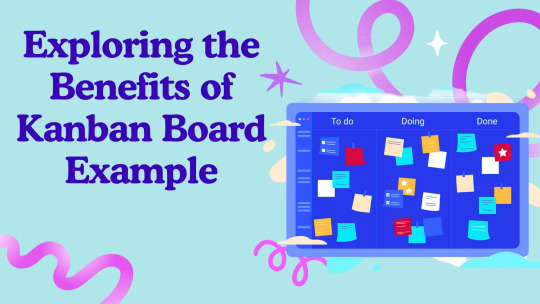
Imagine entering a room where each task, deadline, and project is arranged neatly before you. There would be no chaos or confusion, just a smooth workflow. No, this is not a dream factory. A Kanban board really can help your team.
In a world where efficiency is king and time is money, Kanban boards are becoming a powerful visual tool to transform messy work into organized work. By exploring the benefits of a Kanban board example, you'll find how this simple yet effective approach may help you to transform your productivity, enhance cooperation, and achieve your goals more quickly.
Whether you're new to Kanban or a seasoned pro, Delving deeper into these examples will provide new insights and inspiration to take your project management to the next level.
What is the Kanban Board?
Before getting into the benefits, you should first grasp what a Kanban board is. A Kanban board is a visual project management tool that aims to increase workflow efficiency and transparency. It uses columns to represent different stages of a process and cards to symbolize individual tasks. As tasks progress, they move across the board from one column to the next, providing a clear, real-time overview of their status. This visual technique assists teams in better managing their workload, identifying bottlenecks, and systematically completing tasks.
The Benefits of Project Management Kanban Board
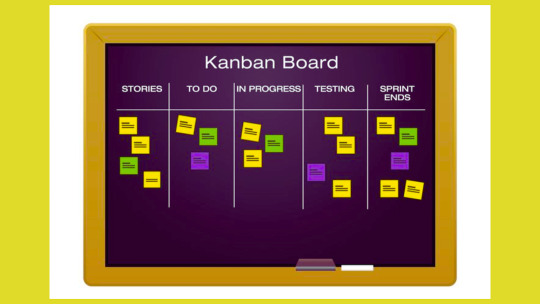
The benefits of Kanban board go beyond simple task management—they offer a clear path to optimizing your team’s processes and improving overall efficiency.
Enhanced Visibility and Transparency
One of the main benefits of using a Kanban board is its ability to increase visibility. By visualizing the entire workflow in a single dashboard, everyone on the team can see the status of their work at a glance. This transparency promotes better communication and keeps all team members informed of the current workload and progress of the project.
Improved Workflow Efficiency
Kanban boards help teams identify bottlenecks and inefficiencies in their processes. By limiting work in progress (WIP) and supporting pull-based systems, teams can avoid overloading members with too many tasks at a time. Kanban examples show how this leads to a smoother workflow, faster task completion, and a more balanced workload for the team.
Flexibility and Adaptability
Kanban boards are flexible and can be customized to suit any team or project. Kanban boards can be changed to meet your specific needs, whether you want to add a new column, change the work label, or color code by priority. Examples from different industries highlight how adaptable Kanban is, making it useful for software development, marketing, and beyond.
Continuous Improvement
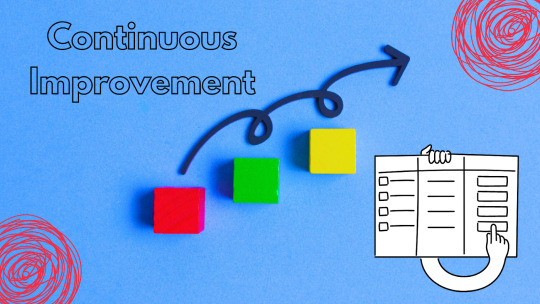
Kanban boards promote a culture of continuous improvement. Regularly reviewing workflows allows teams to make additional changes to increase productivity. An example Kanban board demonstrates how metrics such as cycle time may help teams make data-driven decisions and continuously improve processes for better results.
Exploring Kanban card examples can encourage teams to make use of these benefits. Increase teamwork, efficiency, and project results.
Kanban Card Examples
Kanban cards are an essential component of a Kanban board. They represent each task or work item in a project.
Task Name: "Design homepage layout"
Details: Design the layout for the new website homepage using wireframes.
Assigned To: Sarah
Due Date: Sept 15, 2024
Status: In Progress
Task Name: "Write a blog post"
Details: Write a 1,000-word article on remote work trends.
Assigned To: John
Due Date: Sept 12, 2024
Status: To Do
Task Name: "Customer feedback review"
Details: Review feedback from the latest product launch survey.
Assigned To: Emma
Due Date: Sept 20, 2024
Status: Done
Checkout this Video - EmpMonitor: Skyrocket Your Sales with Better Project Management
youtube
Summary
Finally, exploring the benefits of project management Kanban board illustrates how this basic yet effective tool may change the way teams organize their work. By enhancing visibility and transparency, improving workflow efficiency, and fostering continuous improvement, Kanban boards provide a clear framework for achieving better productivity and collaboration. Their scalability and flexibility make them suited for a wide range of businesses, while the visual approach keeps teams organized and motivated.
0 notes